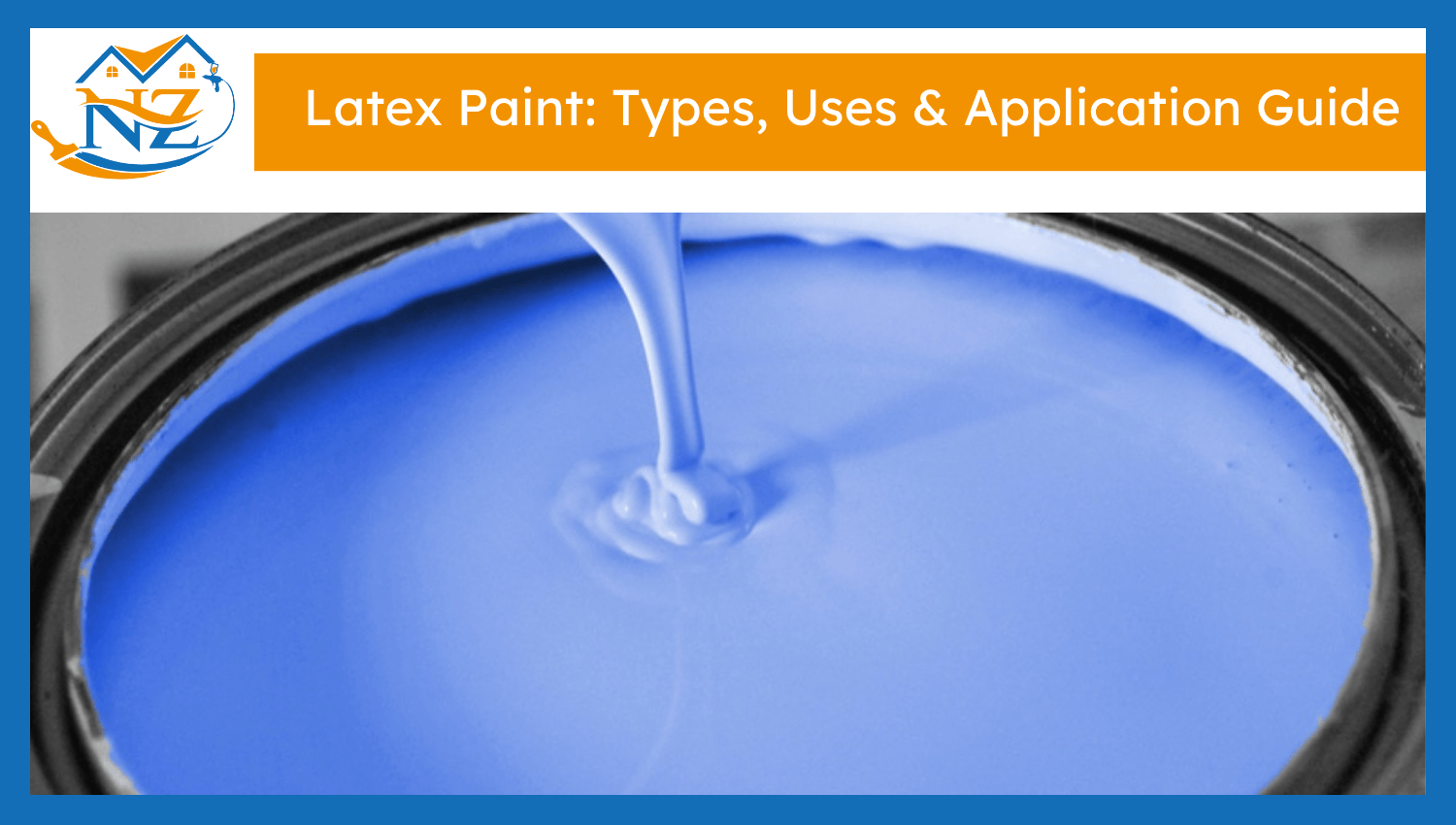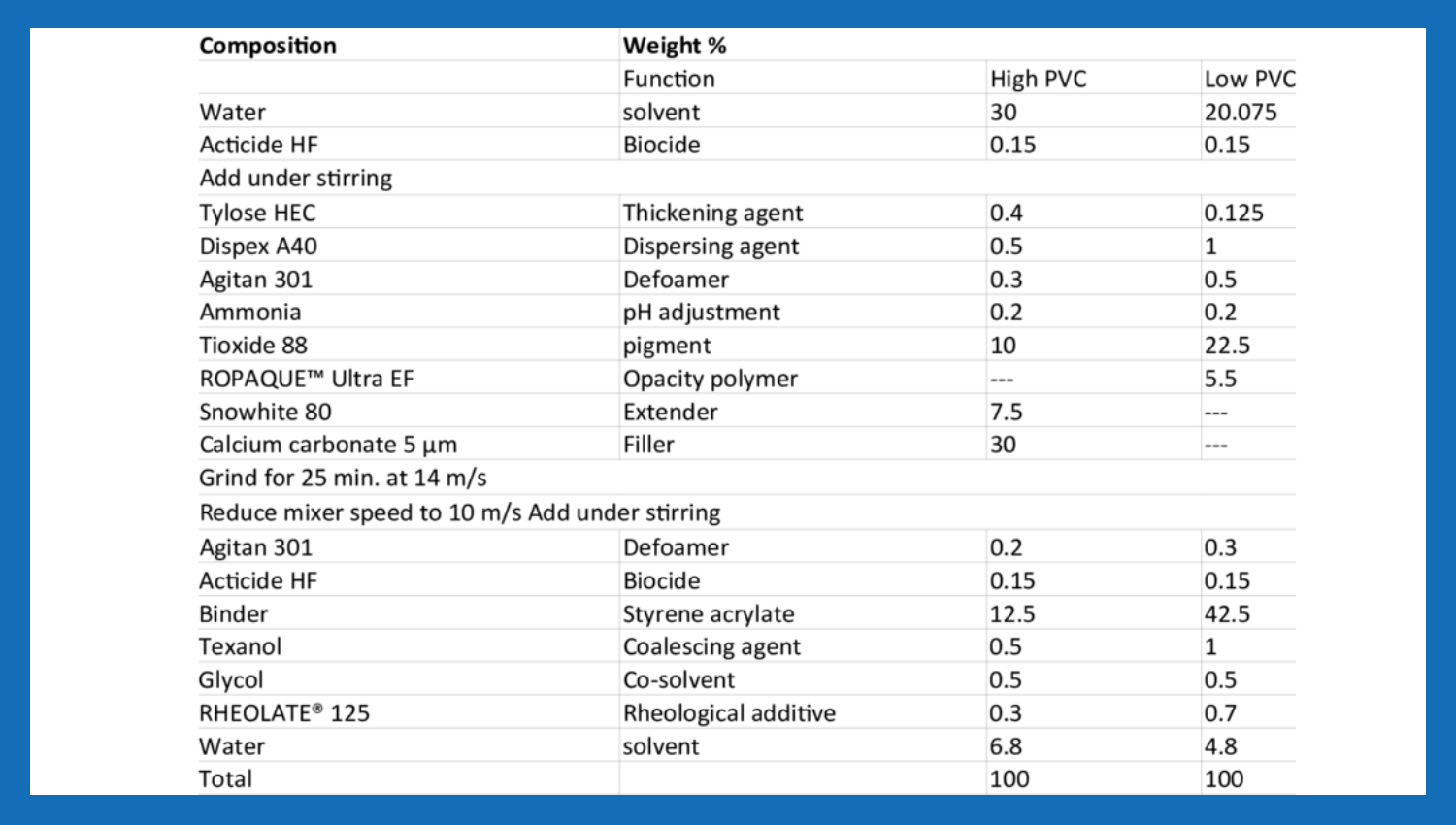

Latex paint is a low-odor, versatile, and lightfast paint with mildew-resistant abilities. Unlike natural latex, which contains allergic proteins, it is derived from man-made components. Synthetic resins (acrylic or vinyl acetate), pigments (titanium dioxide, zinc oxide), solvent (water), and additives are emulsified to obtain this paint. It was first formulated in Canada in the 1940s from rubber trees as a binder. Later, manufacturers shifted to artificial resins for safety concerns. It is water-based paint that dries quickly through evaporation, leaving behind a durable coating. It is an eco-friendly paint with low volatile organic compounds, which makes it best for interior use.
A survey reveals the global latex paint market will increase from USD 71 billion in 2023 to USD 122.32 billion in 2031. Latex paints gained popularity as a safer and easier alternative to oil-based paints.
Here are the key properties of Latex paint:
| Property | Description |
|---|---|
| Base | Water-based |
| Finish | Available in flat, eggshell, satin, semi-gloss, and gloss finishes |
| Drying Time | Fast drying (touch-dry in 30–60 minutes) |
| Odor & VOCs | Low odor and low VOC content — safe for indoor use |
| Adhesion | Good on drywall, plaster, wood, and masonry (requires primer on glossy surfaces) |
| Cleanup | Easy — soap and water |
| Flexibility | Resists cracking and peeling |
| Durability | Good for light to medium traffic areas; premium types are highly scrubbable |
| Color Retention | Resists fading; holds color well over time |
| Breathability | Allows moisture to escape, reducing blistering on walls |
| Toxicity | Low; suitable for homes, schools, and enclosed spaces |
| UV Resistance | Good (especially exterior-grade formulations) |

Here are the four common types of latex paint:
It is often misunderstood as 100% acrylic, though they are different in their formulations. Acrylic latex paints use acrylic as a primary binder, whereas 100% acrylic contains solely acrylic resins. It can stretch and contract with temperature changes due to its flexible nature. It is highly adhesive and doesn’t crack or peel away easily.
Vinyl-acrylic latex paint uses vinyl acetate and acrylic polymers as its primary binders. It contains extenders (calcium carbonate) and additives (thickeners, defoamers, preservatives) to increase paint performance. Vinyl-acrylic paint is cost-effective but less durable than 100% acrylic paints. It requires frequent repainting when exposed to UV light.
Alkyd-modified latex paint is a blend of alkyd and acrylic paint properties. It provides a glossy finish like oil-based paints and quick drying time with acrylic resins. This hybrid paint has a strong odor compared to pure latex paints. It is also resistant to yellowing, moisture, and temperature changes. Alkyd-modified latex paint is great for doors, trim, and cabinets.
Interior latex differs in its resin, durability, and VOC from exterior paints. It has a stiffer resin and focuses on a smooth finish, stain resistance, and low odor. Exterior latex contains softer resins that adjust with temperature shifts. It also includes additives for UV resistance and mildew protection.
Here are the five main uses of latex paint:
Latex paint can be used to color interior walls and ceilings. It provides a matte (shine-free), eggshell (shiny), and gloss finish. Homeowners prefer it due to its non-reflective and washable properties.
Latex paint variants are ideal for exterior use as they are resistant to fading. They are breathable and don’t allow moisture to accumulate. It acts as a protective layer to siding and exterior walls.
It can be used to paint dressers, shelves, tables, and chairs to increase their lifespan. It is also used to color decorative pieces such as picture frames, vases, and mirror frames. Satin and semi-gloss latex options work well for trim, molding, and furniture when a durable surface is needed.
Use latex-based masonry paint or acrylic latex paint formulations for concrete, masonry, stucco, or brick surfaces. Do not dump the waste latex paint. Mix it with concrete to resist the frequent freeze-thaw cycles.
Latex paints can be used on metal furniture, fixtures, and appliances with a suitable metal oil-based primer to prevent rust. It can also be used on exterior metal surfaces like fences and gates.
Here are the four limitations of latex paint:
Here are the best latex paint color options:
| Color | Visual Appeal | Common Uses |
|---|---|---|
| Pure White | Clean, bright, timeless | Ceilings, trims, modern interiors |
| Warm Beige | Neutral, cozy, soft | Living rooms, hallways, open floor plans |
| Cool Gray | Sleek, modern, calming | Bedrooms, bathrooms, minimalist designs |
| Greige (Gray + Beige) | Balanced, trendy, versatile | Whole-house color, contemporary homes |
| Charcoal Gray | Bold, dramatic, sophisticated | Accent walls, kitchens, exteriors |
| Navy Blue | Deep, elegant, classic | Dining rooms, cabinets, front doors |
| Sage Green | Soft, earthy, serene | Bedrooms, offices, eco-inspired spaces |
| Olive Green | Warm, natural, vintage | Kitchens, furniture, rustic themes |
| Sky Blue | Light, fresh, open | Bathrooms, nurseries, ceilings |
| Dusty Rose | Muted, romantic, warm | Bedrooms, vintage interiors, feature walls |
| Mustard Yellow | Rich, retro, energetic | Accent walls, kitchens, eclectic spaces |
| Terracotta | Warm, earthy, Mediterranean | Living rooms, exteriors, boho styles |
| Soft Black | Moody, elegant, cozy | Interior doors, accent walls, cabinetry |
| Cream/Off-White | Soft, traditional, warm | Traditional interiors, trim, walls |
| Taupe | Neutral, classic, flexible | Office spaces, hallways, transitional décor |
Here is the step-by-step guide to apply latex paint: